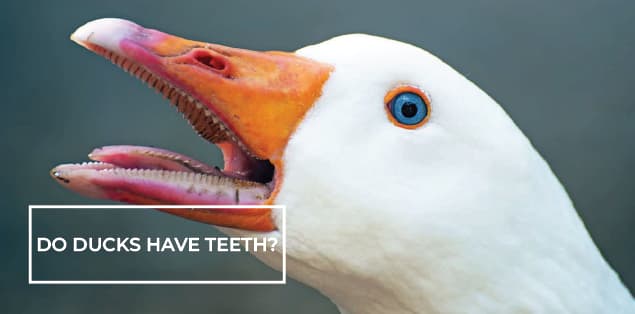So, do ducks have teeth? You will find the answer contradictory because even though ducks don’t have teeth, they still manage to eat food. Ever wondered how they manage to do that? Well, it’s a pretty fantastic thing to know! Continue reading!
In a nutshell, the strong beak of ducks lets them catch their food, irrespective of the duck species. Unknown to many, dabbling, domestic, diving, and wild ducks have distinct bills. And guess what? None of them have teeth.
Most duck species come in flatter bills, while others have sharper bills. To your surprise, duckbills are serrated – having a saw shape along the edge that appears like a tooth. Although, it is not the real teeth.
Now wondering, if ducks don’t have teeth, then how do ducks eat? You don’t need to venture far to find the answer. We will highlight some important aspects of raising ducks, feeding ducks, and how ducks chew. Also, we will talk about a quick overview of the ducks living.
Before we proceed into the parent topic; “do ducks have teeth?”, whisk through some important pointers in regards to ducks:
Ducks Teeth Anatomy
In the traditional sense, ducks don’t have teeth. However, they have teeth-like structures – bristles through which ducks devour food. Duck bristles are called lamellae, located inside the duck’ bill edge. Also called serrated bills, these teeth-like structures make the saw blade shape. It looks like teeth to normal humans, but they are not. Although, they work for the same cause as ducks. How amazing is that?
Duck Bills Anatomy
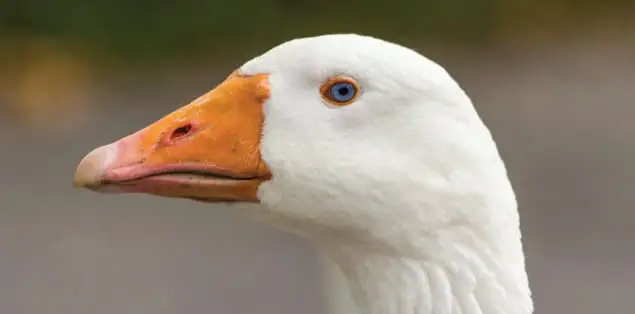
As mentioned above, ducks use their bills to hold and swallow food as water creatures. You have come across ducks once in a while in a local park, but we bet we haven’t paid attention to their bills. Duckbills have fleshy covering. People often think of a duck’s bill and duck’s beak the same. But a beak is more pointy, while a bill is just flesh around the beak. A duckbill comprises a bony skeleton (that works similarly to a jaw). Lastly, duckbills are flat (spatulate shape), through which they crush food with the same strength of teeth.
Duck Beaks Anatomy
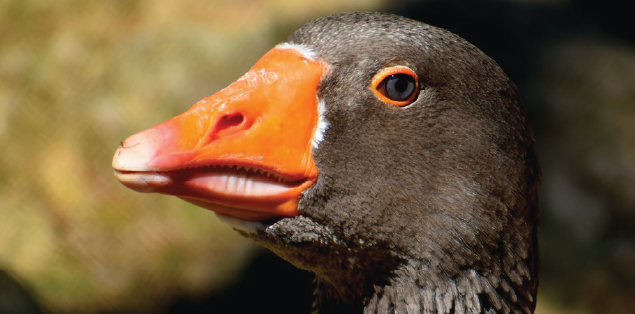
Understand one thing, distinct bird species have distinct beak shapes and sizes. At the edge of the bill is a fleshy beak. In comparison to various other functions, the significant one is feeding. So it goes without saying that duck species, size, color, and shape have a lot to do with duck beaks. For example, domestic ducks are mostly yellow if you talk about domestic ducks. Plus, their beak is also small.
What Do Ducks Use the Lamellae For?
Unknown to even avid bird watchers, ducks use their lamellae for several other functions. For example, if a duck wants to pull more plant material into the mouth, lamellae work best to filter the mud and water.
Furthermore, ducks use lamellae for grooming as well. The next time you visit the local park to witness ducks, pay attention to ducks when they run their bill around their feathers to clean them.
How Do Ducks Eat Their Food?
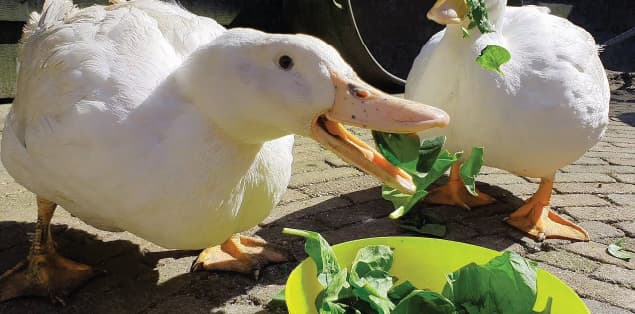
If you want to know how ducks chew their food, let us clarify again that ducks don’t have teeth. And they can’t chew their food like humans and hence, swallow them whole. So you must feed pet ducks the soft food. Still, wondering what the processed duck follows to break the food in the stomach? Continue reading!
Duck, follow the steps. They start with eating rocks. The food they eat goes straight into their gizzard. A duck’s gizzard is where food is accumulated before going to the stomach. Next, the food gets rolled like a washing machine inside the stomach with rocks. As a result, rocks break up the food until ducks find it suitable for eating.
Do Ducks Have Teeth on Their Tongue?
In a nutshell, understand that a duck’s tongue helps act as a catalyst with foraging characteristics. If you are a keen bird lover, scroll on! Till now, you have understood that ducks don’t have real teeth. They have barb-like structures on the tongue that compensate for the lack of teeth.
To your surprise, the duck is one of the bird species whose tongue has a bone. Ducks eat fish and aquatic plants in the water through the hair and spines on the duck tongues. The duck needs a tongue to filter out mud and water from entering the mouth. They utilize the same filtering system throughout their tenure.
Do Duck Beaks Have Teeth?
You are in constant flux if you think that duck beaks have teeth. You are getting confused with lamellae, present around the outer edge of a duck’s beak. Most people consider teeth in duck beaks to be bristle-like notches that help ducks find their prey. With thin rows of bristles in their mouths, ducks find it helpful to break down the food they consume.
Do Baby Ducks Have Teeth?
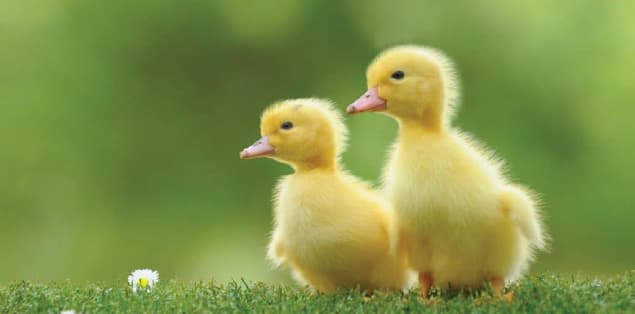
No, not even a baby duck’s teeth anatomy is built to give them teeth. But they have serrated notches in their bills which is often synonymous with lamellae. Also, not even the adult ducks swallow food with their teeth, be it wild ducks. The duck community utilizes bristle-like notches that work similarly to the human jaw to eat food.
How Many Teeth Do Ducks Have?
It is crystal clear that ducks don’t have teeth. But they do have bristles like notches. People consider a duck’s mouth and teeth lamellae at the outer edge of the beak. They look like teeth lining the edges of the duck’s mouth, but they are not real teeth.
So, the next time you visit the local park or any other attraction here, ducks are in heavy presence, don’t offer them the food which can choke their throat because ducks don’t have teeth.
What Are Ducks Teeth Called?
Duck teeth are labeled lamellae. It is a comb- or fringe-like structure on the outer edge of a duck’s bill. More often, people replicate ducks’ lamellae with serrated teeth.
Can Ducks Bite You?
Domestic ducks form great bonds with humans. If you ever have an arena where ducks’ concentration is heavy, you can hear the quacking of ducks in herds, and children roam around them. It’s good to see domestic ducks are friendly. But if you ask if the duck bites hurt, then the answer is yes, a duck bite is painful too!
Some other duck breeds also are not aggressive. However, the anatomy of duck behavior says that male ducks have more aggression than female ducks. Only if they feel threatened. So humans need to understand not to trigger like other animals.
Are Ducks, Geese, and Swans All Same?
No! Ducks, geese, and swans have distinct bones in their necks. If you talk about these omnivores or water creatures, most ducks have 16 or fewer bones in their neck. On the other hand, swans and geese, compared to ducks, have neck bones hovering between 17-24. However, they may appear the same to kids and like-minded adults too!
But if you observe them carefully, you will find that swans are stronger and bigger than ducks. But their beaks are pointed, which lets them. Swans and geese don’t have teeth, just like ducks. Coming to the topic theme, all the duck species are not the same. For example, diving ducks feed themselves by diving beneath the water surface.
How to Keep Pet Ducks Teeth Healthy?
Consider pet ducks if you want to fancy ducks as a farmyard animal. Unknown to many, duck eggs and feathers are in very high demand in the international market. However, you need to ensure you feed your duck clean water adequate diet to keep them healthy and safe. Follow the diet chart of each duck breed.
What Family is the Duck in?
Anatidae, aka biological family of birds, categorizes the ducks on a family scale. In coastal towns, one can find ducks in saltwater in hills, cities, and freshwater. Sometimes, ducks can also quack around the dry land in a lush green surrounding.
Ducks usually weigh between 1-3 pounds and are 10-20 inches long. They have compact bodies but are wide and flat. You can find ducks quacking in any water but mostly in ponds, lakes, and rivers. If you talk about their life expectancy, it hovers between 4-8 years.
Final Words
Ducks are omnivores. At the same time, backyard ducks eat rocks, meat, or fish and have a varied diet of other healthy traits. Ducks eat and find food with serrated bills that act like human jaws or teeth.
Although ducks can’t chew but swallow food, their environment, nutritional value, bills, beak, and anatomy help them eat food. In addition, a duck’s bill is a cluster of grin patches and lamellae.
So when are you planning to see one of the fascinating animals – ducks near you?
